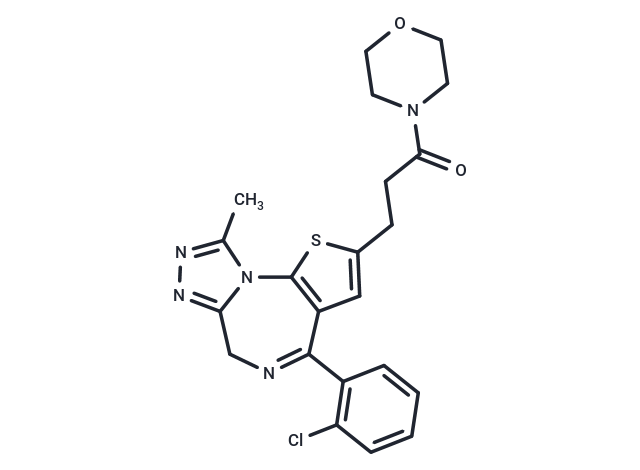Shopping Cart
- Remove All
 Your shopping cart is currently empty
Your shopping cart is currently empty

Apafant (WEB 2086) is a highly potent platelet activating factor (PAF) antagonist that blocks eosinophil activation and can be used to study experimental allergic conjunctivitis in guinea pigs.

| Pack Size | Price | Availability | Quantity |
|---|---|---|---|
| 1 mg | $113 | In Stock | |
| 5 mg | $289 | In Stock | |
| 10 mg | $428 | In Stock | |
| 25 mg | $698 | In Stock |
| Description | Apafant (WEB 2086) is a highly potent platelet activating factor (PAF) antagonist that blocks eosinophil activation and can be used to study experimental allergic conjunctivitis in guinea pigs. |
| Targets&IC50 | PAF:(ki)9.9 nM |
| In vivo | Guinea pigs were actively sensitized and OA solution was instilled into the eyes of guinea pigs on Days 15 and 17 to elicit the allergic conjunctivitis. To examine the effects of Apafant on allergic conjunctivitis, Apafant ophthalmic solution was topically administered 0.1%, 1%, q.i.d. through Days 14 to 17. Compared to the controls (vehicle treatments), the animals treated with Apafant ophthalmic solution showed significantly reduced clinical symptoms (redness and edema) and itch-scratch responses in both the first and second antigen challenges. [1] |
| Alias | WEB-2086, WEB2086, WEB 2086 |
| Molecular Weight | 455.96 |
| Formula | C22H22ClN5O2S |
| Cas No. | 105219-56-5 |
| Smiles | O=C(N1CCOCC1)CCC=2SC3=C(C2)C(=NCC4=NN=C(N43)C)C=5C=CC=CC5Cl |
| Relative Density. | 1.48g/cm3 |
| Storage | Powder: -20°C for 3 years | In solvent: -80°C for 1 year | Shipping with blue ice. | ||||||||||||||||||||||||||||||
| Solubility Information | DMSO: 30 mg/mL(65.80 mM), Sonication is recommended. | ||||||||||||||||||||||||||||||
Solution Preparation Table | |||||||||||||||||||||||||||||||
DMSO
| |||||||||||||||||||||||||||||||

Copyright © 2015-2025 TargetMol Chemicals Inc. All Rights Reserved.